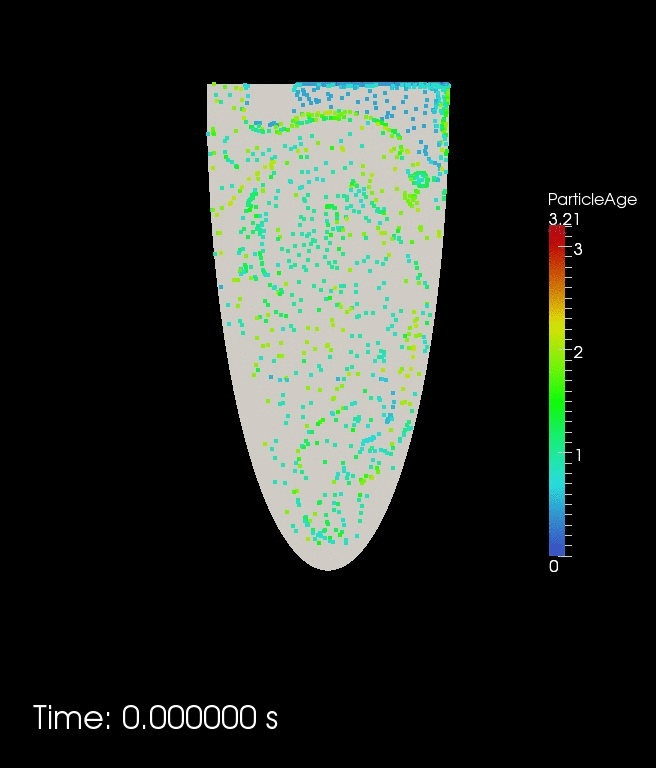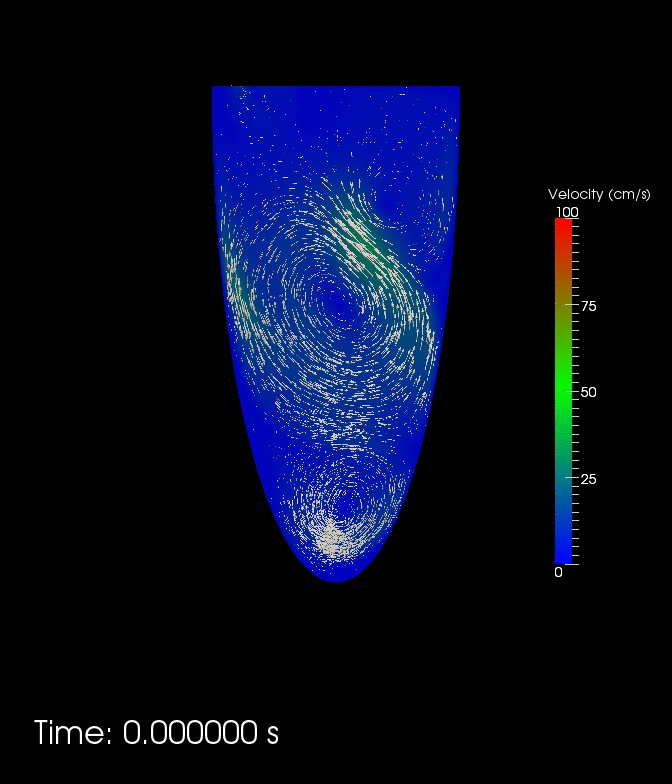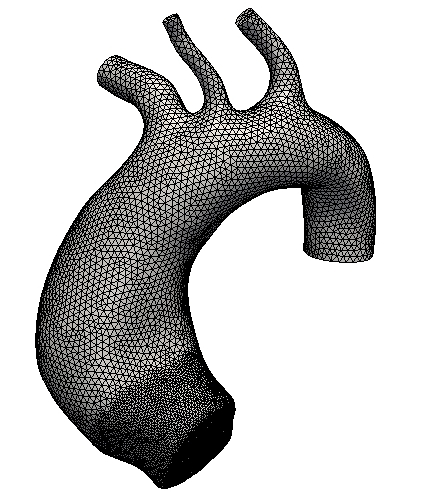The blood flow dynamics inside the human heart has been investigated till now by means of medical imaging techniques (echocardiography or MRI), as well as physical and computational models. However, the modelling of the fluid dynamics is still far from being satisfactory due to the complexity of the phenomena under analysis.
The research focuses on the human Left Ventricle (LV) which distributes blood to the systemic circulation and plays a primal role in the cardiac activity.
Analogously to the medium-large vessel setting, the blood flow is modelled by assuming a Newtonian rheology. Therefore, the incompressible Navier-Stokes equations are numerically solved in order to determine the velocity and pressure fields by considering the Variational Multiscale Method with turbulence modelling for Large Eddy Simulation.
In describing the complex asymmetric vortex structure that develops inside the cavity and allows an efficient filling as well as a natural redirection towards the outflow track, two of the most difficult aspects of cardiac modelling are represented by accounting for the cardiac walls and the valves in a hydro-dynamically realistic manner.
This is due to the severe fluid-wall structure interaction which occurs and cannot be neglected. Nevertheless, FSI problems are complex from both the mathematical and the numerical points of view and the research is still at an early stage as for the complete LV model.
Therefore, a preliminary study has been performed by considering a simplified model for which the LV cavity is represented in first approximation by a truncated prolated spheroid with prescribed wall movement.
Conversely, we focus on the definition of a proper set of boundary conditions accounting for the action of the valves and the presence of the systemic circulation. In this respect, a new formulation of generalized boundary conditions is under development.
For the sake of completeness, we highlight that accurate local numerical studies of the haemodynamics in proximity of the cardiac valves, especially the aortic valve, has been performed by using both simplified or complete models that account or do not for the presence of the leaflets.


Publications:
- T. M. Lassila, A. C. I. Malossi, M. Stevanella, E. Votta and A. Redaelli et al., Multiscale fluid-structure interaction simulation of anatomically correct left ventricle fluid dynamics with fictitious elastic structure regularization, Preprint submitted: Wiley InterScience, 2012. EPFL-ARTICLE-181237
- A. Tagliabue, L Dedé, and A. Quarteroni. Fluid dynamics of an idealized left ventricle: the extended nitsche’s method for the treatment of heart valves as mixed time varying boundary conditions. MOX-Report n. 61/2015




